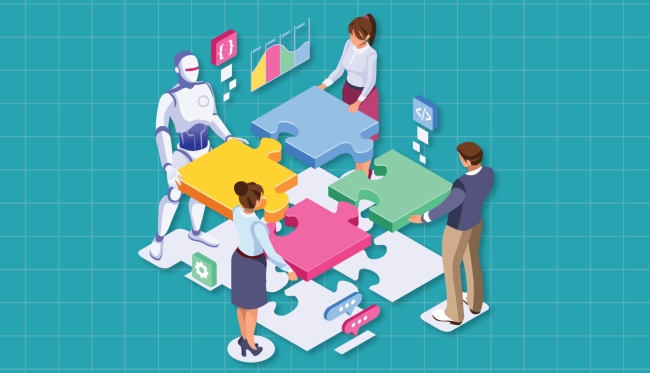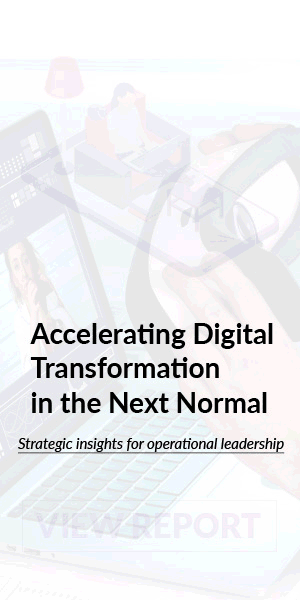Topics
4 Ways Generative AI Unlocks the Future of Soft Skills Training

Generative artificial intelligence (AI) is sending shockwaves throughout the economy as major players in every industry search for innovative ways to create value with this technology.
This machine learning (ML) technology is able to create text, images, or other media in response to a prompt. For example, ChatGPT is a generative AI system that is capable of natural language generation (NLG). If we ask it to explain augmented reality (AR) in simple terms, it generates the following:
“Augmented reality, often abbreviated as AR, is a technology that combines the real world with virtual elements or computer-generated information. It allows you to see and interact with virtual objects or information as if they exist in the real world.”
By combining generative AI with extended reality (XR) solutions like virtual reality (VR), CGS Immersive helps companies create a safe place for employees to learn, practice and refine soft skills such as communication, negotiation, conflict resolution, and customer support.
As more technical work becomes automated, these skills become more important than ever. Deloitte predicts that jobs requiring soft skills will make up 63% of all roles, and research shows that the global soft skills training market will exceed $47B by 2027.
These are the top 4 ways that generative AI unlocks the future of soft skills training:
1. Single source of truth for company policy
Internal subject matter experts can train a chatbot or virtual avatar to answer common questions and provide guidance that’s in-line with existing policies. Information is always up to date due to integrations with tools, curated content libraries and real-time data.
By training the AI model on customer manuals, standard operating procedures, technical procedures, and information on brand voice, enterprises transform a general-purpose AI system into one that’s tailored to their needs.
In addition to being a single source of truth that employees may consult as needed, Generative AI paired with XR can also act as a coach during simulation training. For instance, in our recent collaboration with Scoot, a subsidiary of Singapore Airlines, an AI assistant helps guide learners through the simulation.
“Ask me what ‘LEAP’ stands for,” instructs the AI coach. When the learner asks for more information, the avatar listens and responds dynamically, yet according to its training on Scoot’s unique customer support method. “It stands for ‘Listen Empathize Ask and Paraphrase’,” says the coach.
Since this information is proprietary, all of the data stays on-prem rather than being stored in the cloud. That means companies don’t have to worry about their sensitive data or proprietary policies leaking out.
2. Role-playing for front-line employees
Simulations for corporate L&D is traditonally either written, videos, multiple choice exams or one-on-one coaching sessions. That means there is always a trade-off between scalability, learner retention and effectiveness.
Generative AI changes the paradigm.
That’s because learners can now communicate with synthetic people in virtual reality, or even just over a web browser or through interactive video. Whatever the medium, we always recommend XR for the best results because it puts the learner in a realistic environment that’s closer to what they’ll experience on the job.
For instance, after receiving instruction from the AI coach, Scoot’s learners interact in conversations with problematic customers, such as a passenger who is rude about wanting to switch to another seat on the plane.
This gives flight attendants genuine experience having difficult conversations, all within the safety of a simulation. Many people are reluctant to role-play with a real person for fear of embarrassing themselves. Using immersive technology and generative AI removes this friction and helps employees to engage and feel comfortable within the experience.
None of it is scripted so the AI coach responds dynamically and appropriately to whatever the learner’s responses are, and at the end the coach scores the learner based on how well they applied the ‘LEAP’ method to the situation before giving them a chance to try again.
Remember, since the coach is a single source of truth for company policy, it can provide the learner with accurate feedback on their performance and suggest improvements based on the company’s internal documented policies.
The AI can even provide attribution to show exactly where in the company's manual an employee can find more information about the issue.
3. Create different personas
Companies can create easier or harder situations for their learners by creating different personas. By using the Big Five (OCEAN) personality traits, we can adjust the behavior of the AI system. These traits include:
- Openness
- Conscientiousness
- Extroversion
- Agreeableness
- Neuroticism
For instance, an easy scenario may have a service representative interact with a persona who ranks high in openness and agreeableness. Once they’ve mastered that interaction, they can adjust these metrics to turn the AI into a persona who is less open and agreeable, thus increasing the difficulty of the service interaction and challenging the learner’s skills.
Not only does this give learners experience to deal with lots of different types of people, but it also provides a clear roadmap for progression. Learners can start with a friendly person who politely asks for help and move their way up to dealing with a total jerk.
4. Scalable L&D
What really sets this innovative approach to soft skills training apart from past methods is that it can easily scale to millions of people, no matter where they are, and learners can get trained at their pace 24/7/365.
There may be instances where personalized coaching can still be beneficial, such as for leadership training, but this is now the exception rather than the rule. The truth is that one-on-one coaching is expensive and time consuming. One coach can only help one learner at a time.
Generative AI, on the other hand, can simultaneously teach soft skills to any number of learners. As long as they have an internet connection, they can have real-time, unscripted interactions that build experiential memory.
It’s one thing to read about how to serve difficult customers, but it’s another thing entirely to actually do it. Generative AI gives employees the confidence to tackle even the most difficult situations because they’ve done it before.
The future of soft skills training is experiential
Generative AI gives enterprises the opportunity to scale experiential soft skills training across their entire workforce. There’s no need to choose between quality and quantity.
This technology can provide a single source of truth for company policy. This is just as useful for onboarding on-the-job training as it is for providing, skill-building, cross-training, as well as an ongoing reference.
Whenever an employee has a question about a standard operating procedure or brand voice, they can get a reliable answer from a generative AI instead of having to take the time to dig through a pile of documents or training videos.
Unscripted role-playing for front-line employees is also a big gain. By interacting with different personas in different contexts, learners build muscle memory and confidence for soft skills that will serve them well when they encounter similar situations in the field. They get to learn and practice in a safe environment, and the AI can provide feedback based on the company’s internal documents.[RH7] [CP8]
Ready to get started? Take the first step by learning more about CGS’s TeamworkAR solution.

